Soviet-German non-aggression treaty of August 23 1939. Part of 2
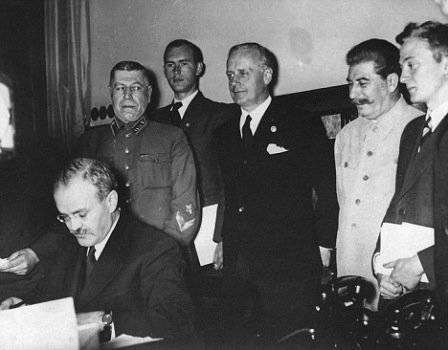
The geopolitical position of the Soviet Union to the beginning of 1939 of the year
Top of 1939 The geopolitical position of the Soviet Union has become threatening. The unsuccessful outcome of attempts to create a collective security system led to the fact that the Land of the Soviets was in fact in international isolation. The leading countries of the West, Great Britain, France and the United States, showed no desire to bind themselves with treaty obligations towards the USSR. Meanwhile, the latter turned out to be face to face with the countries of the Anti-Comintern Pact, which by the beginning of 1939 was composed of. It included not only Germany, Italy and Japan, but also Hungary (joined the 24 pact in February 1939), Spain (26 in March 1939) and the puppet state of Manchuku (24 in February 1939), which was under Japanese control.
The first three countries posed the greatest danger. In the first half of 1939. the armed forces of Germany in peacetime consisted of 51 divisions (including 5 tank; B. Muller-Hillebrand. Land Army of Germany 1933-1945. Izographus Publishing House. Moscow, 2002. C. 15.). They could be reinforced by the armed forces of Italy, with which 22 may 1939g. The so-called “Steel Pact” was concluded, containing obligations for mutual assistance and alliance in the event of a war with a third party. By mid-April, the 1939 in the army of the metropolis in peacetime states numbered 450 thousand people - 67 divisions (of which 2 was a tank division). In addition, Italy had large Air Force and Navy, which at the beginning of the war, respectively, 2802 aircraft, 4 battleships, 22 cruisers, 128 destroyers and 105 submarines (History World War II 1939 – 1945 in 12 volumes. Ed. A. A. Grechko. M .: Voenizdat, 1973-1982. Tom 2. On the eve of the war. M .: Voenizdat, 1974. C. 382-383.). In the Far East, the threat to the national interests of the USSR was represented by Japan, whose Kwantung Army numbered about 300 thousand. To this should be added the Air Force of about 1 thousand airplanes and navy, by the end of 1939g. numbered 10 battleships, 6 aircraft carriers with 396 aircraft, 35 cruisers, 121 squadron destroyer, 56 submarines (History of the Second World War 1939 – 1945 in 12 volumes. Edited by A. A. Grechko. M .: Voenizdat, 1973-1982. Volume 2. On the eve of the war. M .: Voenizdat, 1974. C. 385-386 .).
By February 1939 the number of the Red Army was 1 910 thousand people. The number of units of armored vehicles and aviation amounted to 10 thousand and 5,5 thousand units, respectively, and continuously increased. The construction of the Navy was also intensively conducted. A comparative analysis of the quantitative and qualitative characteristics of the armed forces of potential opponents is not the goal of this work. However, it is worth noting that in case of war with the countries of the Anti-Comintern Pact, the Soviet Union would be forced to fight on two fronts. This would significantly complicate the coordination of actions, as well as the distribution of human and material resources. It should also not be forgotten that after the "purge" of 1937-1938. The Red Army was in a weakened state due to the loss of a significant number of experienced officers. In addition, the rearmament program, during which it was planned to equip the Soviet troops with automatic weapons, modern aircraft, tanks KV-1, T-34 and other types of weapons, just started. Under these conditions, a war on two fronts with the countries of the Anti-Comintern Pact was undesirable.
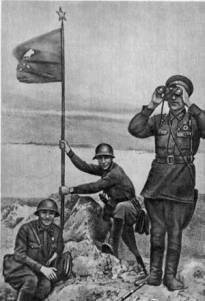
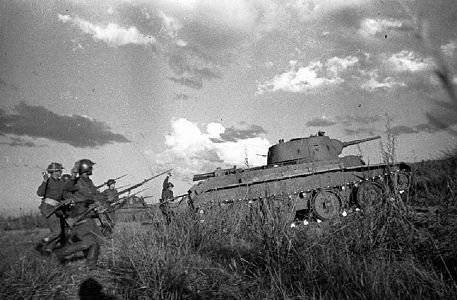
The fighting on Lake Hassan (1938) and the Khalkin Gol River (1939) is a test of the strength of the Red Army.
The strengthening of the countries of the Anti-Comintern Pact and the position of non-intervention, which Britain, France and the USA occupied, prompted the leadership of the Soviet Union to seek rapprochement with Germany.
Spring-year crisis 1939 of the year.
Meanwhile, events were taking place in Europe’s foreign policy arena, known as the spring-summer crisis of 1939. 15 March 1939. the final partition of Czechoslovakia took place: by a personal decree of Hitler, Bohemia and Moravia were declared a protectorate of Germany. However, the crisis was not caused by the order of the Führer, but by completely different reasons.
In the final division of Czechoslovakia, Germany included only a part of its territories. Slovakia was declared independent (the “Treaty on Protection” between the two states was signed on 23 in March 1939), and Transcarpathian Ukraine was occupied by Hungary during 14-17 in March on 1939. With the full occupation of Czechoslovakia, the Third Reich and the Soviet Union were divided only by the 150-kilometer strip of Polish territory. However, instead, Germany chose to keep the buffer from independent states (although their “independence” was rather conditional), thus excluding any reason for war with the Soviet Union.
Such a scenario evoked discontent in Paris, London, and Washington. The warning was a protest from France, a tough statement from Chamberlain 17 in March 1939, and a response from the American ambassador from Berlin, 20 in March 1939. in protest against the "wrong" occupation of Czechoslovakia. However, the warning had no effect, and then concrete measures were taken to worsen the German-Polish relations, which were rather warm after Hitler came to power.
On 21 March 1939. In Berlin, a meeting was scheduled between the German and Polish Foreign Minister Ribbentrop and Beck. At this meeting the question of the transfer of the city of Danzig to Germany, which had the status of a “free city” and disputed territories (the so-called “corridor”), was to be resolved. In exchange, Poland was offered an extraterritorial road, preserving access to the Baltic Sea and the extension of the German-Polish non-aggression treaty. However, instead of the previously planned visit to Berlin, the Polish minister went to London. And 26 March 1936. All German proposals were categorically rejected. At the same time, 23 March in Poland was announced partial mobilization. In addition, 6 April 1939. Between England and Poland, the Polish-British Military Convention was framed. In response to this 1 April 1939g. Hitler gave the order to start developing a war plan with Poland, and 28 on April 1939. broke the German-Polish non-aggression treaty.
Spring-year crisis 1939. This is explained by the fact that Hitler actually began his game and took actions inconsistent with the UK and diverging from its geopolitical interests. However, the harsh reaction of Western countries, supported by a sharp deterioration in German-Polish relations, forced him to temporarily reconsider his foreign policy line, the leitmotiv of which was "living space in the East." At the same time, it became clear that Poland, which within a few days had changed its foreign policy line, becomes an opponent of the Third Reich. Under these conditions, Hitler began to look for ways of rapprochement with the Soviet Union.
The rapprochement of the USSR with Germany: prerequisites and first steps.
Attempts to get closer to Germany were made by the leadership of the Soviet Union with 1934, when David Kandelaki was sent to Germany as a trade representative. The “mission” of Kandelaki was to improve not only economic, but also political relations. So, back in 1936g. The Soviet side proposed Germany to conclude a non-aggression pact, which was rejected under the pretext that the contracting parties do not have a common border. In general, the Kandelaki mission, which ended in 1937, did not reach its goal.
The first prerequisites for the improvement of Soviet-German relations arose soon after the conclusion of the Munich agreements, when 22 December 1938. Germany made a declaration of readiness to conclude an economic agreement, under the terms of which Germany gave the Soviet Union a loan of 200 million marks for the purchase of industrial goods. The loan was to be repaid by the Soviet side during the 2 years with the supply of raw materials.
The next step was made by the leadership of the USSR. 21 January 1939. It was adopted by the Politburo of the Central Committee of the CPSU (b), which read: “Oblige tg. Mikoyan, Kaganovich, L.M. Kaganovich, M.M. Tevosyan, Sergeev, Vannikov and Lvov to January 24 1939. submit a list of absolutely necessary machine tools and other types of equipment that may be ordered on a German loan " (Decision of the Politburo of the Central Committee of the CPSU (b) of 21 in January 1939. No. 67 / 187 (quoted in the book: Bezymensky LA, Hitler and Stalin before the fight. M .: Veche, 2000. C. 184).). It is noteworthy that L.M. Kaganovich headed the People's Commissariat of Communications, Lviv - mechanical engineering, MM Kaganovich - aviation industry, Tevosyan - shipbuilding. Sergeev - ammunition, Vannikov - weapons.
The aggravation of the situation in Europe, caused by the failure of the Polish-German negotiations, prompted I. Stalin at the XVIII Congress of the CPSU (b) 10 in March 1939. make a speech, which in Western historiography is known as "talking about roasted chestnuts." In this speech, I.Stalin assessed the events taking place in the international arena, and lined up the USSR foreign policy concept:
“... A characteristic feature of the new imperialist war is that it has not yet become a universal, world war. The aggressor states lead the war in every possible way infringing upon the interests of non-aggressive states, primarily Britain, France, and the United States, while the latter are moving backwards and retreating, giving the aggressors concession after concession.
Thus, before our eyes, there is an open redivision of the world and spheres of influence at the expense of the interests of non-aggressive states without any attempts to repulse and even with some connivance from the latter. Unbelievable, but it is a fact.
How can one explain the one-sided and strange character of the new imperialist war?
How could it happen that non-aggressive countries, which have enormous opportunities, so easily and without resistance, abandoned their positions and their obligations in favor of the aggressors?
Is this not due to the weakness of non-aggressive states? Of course not! Non-aggressive, democratic states, taken together, is indisputably stronger than the fascist states both economically and militarily.
How then can the systematic concessions of these states to the aggressors be explained?
... The main reason is the refusal of the majority of non-aggressive countries, and first of all of England and France, from the policy of collective resistance to the aggressors, in their transition to the position of non-intervention, to the position of "neutrality".
Formally, the policy of non-intervention could be described as follows: “Let each country defend itself against aggressors, as it wants and as it can, our business is a party, we will trade with both the aggressors and their victims.” In fact, however, the policy of non-intervention means the indulgence of aggression, the outbreak of war, therefore, turning it into a world war. In the policy of non-interference, the desire, the desire not to interfere with the aggressors to do their dirty deed, does not interfere, say, with Japan getting involved in a war with China, and even better with the Soviet Union, not interfering, say, with Germany getting bogged down in European affairs Union, to give all war participants to get bogged down deep into the mud of the war, to encourage them in this secretly, to let them weaken and deplete each other, and then, when they are weak enough, to perform on the stage with fresh forces - to act, of course, "in the interests of peace" and dictate ass evshim belligerents conditions.
... Characterized by the noise that raised the Anglo-French and North American press about Soviet Ukraine. The workers of this press were hoarsely shouting that the Germans were going to the Soviet Ukraine, that they now had the so-called Carpathian Ukraine in their hands, numbering about 700 thousands of people, that the Germans would join the Soviet Ukraine, which has more than 30 millions, this spring, to the so-called Carpathian Ukraine. It seems that this suspicious noise was intended to raise the fury of the Soviet Union against Germany, poison the atmosphere and provoke a conflict with Germany for no apparent reason.
... It is even more characteristic that some politicians and press figures in Europe and the United States, having lost patience in anticipation of the “campaign against Soviet Ukraine”, themselves begin to expose the real background of the policy of non-intervention. They directly say and write in black and white that the Germans cruelly “disappointed” them, because instead of moving further east, against the Soviet Union, they, you see, turned west and demanded colonies for themselves. One might think that the Germans were given areas of Czechoslovakia as a price for the obligation to start a war with the Soviet Union, and the Germans now refuse to pay a bill of exchange, sending them somewhere far away.
... In these difficult international conditions, the Soviet Union pursued its foreign policy, defending the cause of preserving peace. The foreign policy of the Soviet Union is clear and understandable:
1. We stand for peace and strengthening business ties with all countries, we stand and will continue to stand in this position, since these countries will maintain the same relations with the Soviet Union, since they will not try to violate the interests of our country.
2. We stand for peaceful, close and good-neighborly relations with all neighboring countries that have a common border with the USSR, and we will continue to stand in this position, since these countries will maintain the same relations with the Soviet Union, because they will not try to break, directly or indirectly, interests of integrity and inviolability of the borders of the Soviet state.
3. We stand for the support of peoples who are victims of aggression and who are fighting for the independence of their homeland.
4. We are not afraid of threats from the aggressors and are ready to respond with a double blow to the instigators of war who are trying to violate the inviolability of the Soviet borders. Such is the foreign policy of the Soviet Union. ” (Stalin. IV. Complete Works. Volume 14. Report at the XVII Party Congress on the work of the Central Committee of the CPSU (b) 10 in March 1939. M., 1997. C. 120-176.).
J. Stalin made it clear that the goal of the West — to provoke the USSR and Germany to war, in order to take advantage of their mutual weakening — is clear to him. It also made it clear that the main goal of the foreign policy of the Soviet Union is to avoid this scenario.
The next (and very important) step towards rapprochement with Germany was the resignation of the People's Commissar for Foreign Affairs M. Litvinov, who was dismissed from his post on 3 on May 1939. In this post he was replaced by V. Molotov. The resignation of Litvinov, who adheres to a pro-Western orientation, had far-reaching consequences and served as a prelude to the conclusion of the Soviet-German non-aggression treaty.
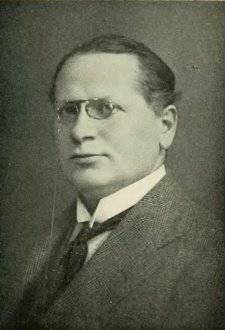
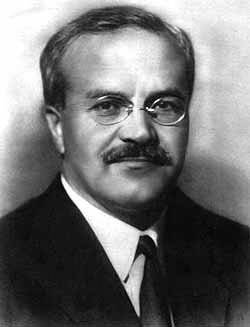
Replacing Litvinov with Molotov as Commissar for Foreign Affairs is an important step in rapprochement with Germany.
Negotiations of the USSR with Great Britain and France in the summer of 1939.
In parallel with the rapprochement with Germany, the leadership of the Soviet Union, an attempt was made to form an alliance with Britain and France. In fact, this was the last verification of the intentions of the leadership of these states regarding their foreign policy. Following the results of this inspection, the leadership of the Soviet Union was to make a final choice.
A proposal for negotiations to discuss measures to prevent German aggression was made by the Soviet Union as early as March 18 of 1939. The offer was rejected. 15 April 1939 Britain and France voiced their proposals. The British asked the Soviet Union to come up with a declaration of readiness to provide assistance to Poland and Romania (with similar declarations made earlier by England and France). The French offered to exchange commitments of mutual support in the event of war to one of the contracting countries with Germany. In response, 17 April 1939. The Soviet government proposed the conclusion of the Triple Alliance between the USSR, Great Britain and France. The Soviet draft treaty was proposed on 2. June 1939. and included obligations of mutual assistance (including military assistance) to the parties to the treaty, as well as to Eastern European countries (it is not difficult to guess that in this case we are talking primarily about Poland). Earlier, in May 31 1939, in his first speech, V.Molotov sharply criticized the uncertain position of England and France. However, the consent of the British to begin negotiations on military issues was received only on July 20.
However, the difficulties in the negotiation process did not end there. Neither London nor Paris were in a hurry to send their ambassadors to Moscow. The Anglo-French military delegations went not on a passenger plane capable of delivering them in a few hours, not on a high-speed military cruiser, but on a slow-moving steamer “City of Exeter”, whose speed did not exceed 13 nodes. As a result, the delegation that went to the Soviet Union 5 August 1939, arrived in Moscow only 11 August 1939.
At the very first meeting of 12 August 1939. It turned out that the head of the British delegation, Admiral Drax, has no written authority to conclude agreements, and the head of the French delegation, General Dumenc, has the authority to “agree on issues related to entering into cooperation between the armed forces of both parties,” but he has no right to sign the final documents of the agreements. . Indicative was the fact that not the foreign ministers, not the commanders-in-chief of the armed forces, but the secondary military arrived at the talks. At the same time, from the side of the USSR were present the top defense commissar K.Voroshilov, the chief of the General Staff B.Shaposhnikov, the commander of the Navy N. Kuznetsov and the commander of the Air Force A.Laktionov.
The negotiations between the Anglo-French delegation and the Soviet side were reduced to the British and French avoiding specific answers to the questions that the representatives of the Soviet side asked them and actually delaying the negotiations. As a result, by August 21 (on this day, Stalin agreed to the arrival in Moscow of the German ambassador Ribbentrop) there was no clarity in any of the issues relating to military cooperation, namely:
- The number of troops that the UK and France can put up against Germany.
- The time it will take to deploy these troops after the declaration of war.
- Poland’s position: will it agree to let the Soviet troops pass through its territory?
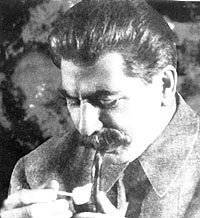
I. Stalin has a lot to think about: negotiations with Britain and France have been going on for over a week now, and no concrete results have been achieved.
The position of the Anglo-French delegation becomes explicable when one considers that the secret instructions given to English Admiral Drax and later transmitted to the French prescribed “to negotiate very slowly and follow the discussion of political issues”, and also “act with the greatest caution, not to communicate any important information, always keep in mind the possibility of the Soviet-German collusion, and negotiate the negotiations as slowly as possible to gain time " (From Munich to Tokyo Bay: A look from the West at the tragic pages of the history of the Second World War: Translation. / Comp. E.Ya. Troyanovskaya. M .: Politizdat, 1992. From 33.). The delay in negotiations and the absence of any definite guarantees - all this was done so that by the time of the outbreak of the war between Germany and Poland (which was soon to begin), England and France would not have any obligations to the Soviet Union. And that, in turn, in the event of a common border with Germany, also had no agreements with it.
However, the calculation was not justified. 23 August 1939. the Soviet-German non-aggression pact was concluded, after which the negotiations lost their meaning.
Soviet-German negotiations in August 1939.
The talks that took place in August 1939g. between Moscow and Berlin vividly demonstrate the degree of mutual interest of the parties in rapprochement and in this respect stand in stark contrast to the Moscow talks between the USSR and Britain with France.
2 August German Foreign Minister I. Ribbentrop summons the plenipotentiary plenipotentiary of the USSR Astakhov and conducts negotiations with him regarding the improvement of Soviet-German relations. The next day (August 3 1939) Ribbentrop made an official statement on the subject of the Soviet-German rapprochement, which specifically stated:
“On all issues related to the territory from the Black Sea to the Baltic Sea, we could easily agree” (Sluch S. Stalin and Hitler, 1933 — 1941. Kremlin calculations and miscalculations. // Domestic history. 01 / 2005. No. 1. C. 110.).
15 August 1939. At a meeting with Molotov, the German Ambassador Schulenburg read out to him Ribbentrop’s note in which he expressed his willingness to personally come to Moscow to resolve all issues. Compared with England and France, after many delays, they sent secondary soldiers without written authority, the difference was especially significant. However, by that time, negotiations with the Anglo-French delegation had not yet reached the final deadlock. In addition, it was necessary to check how serious the intentions of the Germans were. Therefore, in an interview with Schulenburg, Molotov put forward a proposal to conclude a full-fledged pact instead of a declaration on the non-use of force against each other, which was proposed by the German ambassador, that is, asked to justify the position of Germany with concrete actions. Immediately (August 17 1939.) Came the answer about the readiness to conclude a pact for a period of 25 years and the desirability of its early conclusion. The rush of the Germans is easily explained: according to the Weiss plan, the invasion of Poland was planned to start on August 26.
However, one desire to conclude a pact as soon as possible, the Soviet leadership considered insufficient basis. More weighty confirmations were required. At a meeting with Schulenburg 17 August 1939g. Molotov conveyed to the German ambassador a note according to which the conclusion of a non-aggression treaty should have been preceded by the conclusion of trade and credit agreements. Under the terms of these agreements, Germany gave the USSR a loan in 200mln. stamps on 7 years. With this money, the Soviet Union bought German machines and other industrial goods, paying for them with supplies of grain and other raw materials. In addition, Molotov proposed to postpone Ribbentrop’s arrival in Moscow on August 26-27, when the war with Poland would have already begun.
In this situation, Hitler considered it beneficial to fulfill the preliminary conditions for accepting Ribbentrop in Moscow: August 20 in 2: The 00 agreements were signed. On the same day, the Reichsfuhrer writes a personal letter to Stalin, in which he asks to accept Ribbentrop. 21 August 1939. on 15: 00 Schulenburg presents the text of the message to Molotov, and after 2 hours he receives a positive response from Stalin. At the end of August 21, Hitler learns that Ribbentrop can fly to Moscow on August 23.
At noon 23 August Ribbentrop arrives in Moscow. The three-hour talks with Stalin and Molotov were successful. In the evening of August 23 1939. The Soviet-German non-aggression treaty was signed. In this situation, negotiations with the Anglo-French delegation lost their meaning. The last meeting of the Anglo-French and Soviet delegations, at which the British and French learned about the conclusion of the Soviet-German non-aggression treaty, took place on August 25 1939.
29 August 2013
Information